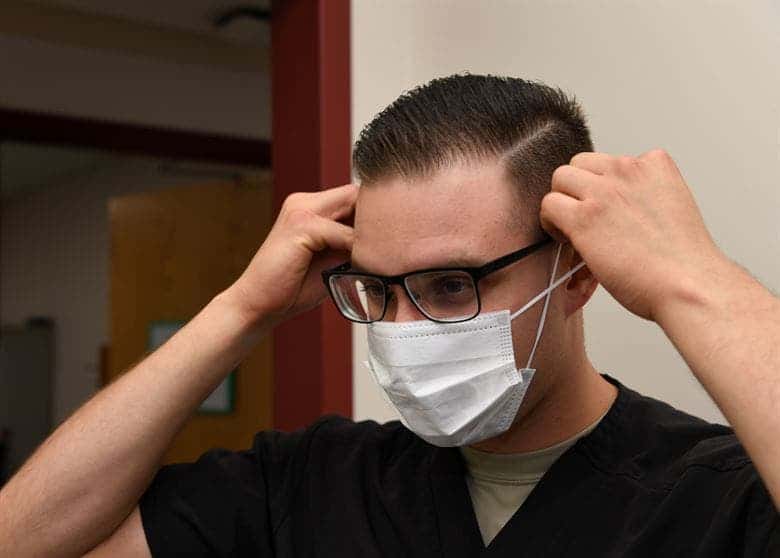
The world was taken by storm when a new pneumonia-causing coronavirus started to spread fast last December in the Chinese province of Wuhan. There are now over 4,500 reported cases of the 2019-nCoV, commonly known as the Wuhan coronavirus, with at least 106 reportedly killed. Although the pandemic has been mostly confined to Chinese borders, the virus has spread to the United States, Canada, Europe, Australia, and Southeast Asia.
Countries of China have reported only a handful of cases, but many more are awaiting confirmation. Most are people who had traveled to Wuhan, the epicenter of the novel coronavirus epidemic.
While local authorities all over the world are working diligently to physically contain potential patients, everyone would breathe a lot easier if they had a vaccine. And, by all signs, we might have one sooner than originally thought.
Vaccine development is an extremely lengthy and costly process: research and trials can span years. Obviously, we don’t have that kind of time to spare.
Previously, scientists have worked under urgent conditions to develop vaccines for other emerging epidemics such as Ebola and Zika. There is now a highly effective vaccine for Ebola that was deployed last year, however, the worst outbreak claiming the most lives occurred in 2014. The Zika vaccine is still in its experimental phase four years after the virus first surfaced in the Americas.
But the situation with the Wuhan virus vaccine may be different.
The virus’ genome was sequenced in record time by Chinese researchers and its blueprint has since been shared with researchers from all over the world. This unprecedented gesture of transparency from behalf of the Chinese microbiologists has dramatically increased the odds of developing an effective vaccine by allowing thousands of scientists outside the country to search for a weak spot.
Already, the National Institute of Health (NIH) in the U.S. has partnered with biotech firm Moderna to begin producing a Wuhan coronavirus vaccine. Meanwhile, the Coalition for Epidemic Preparedness Innovations is funding three research teams who are racing to create working versions of a vaccine.
“We’re already working on it. And hopefully in a period of about three months, we’ll be able to start a phase I trial in humans,” said Anthony Fauci, director of the National Institute of Allergy and Infectious Diseases at the National Institutes of Health.
“I told them, ‘you are going to have your baptism of fire, folks’,” Fauci said of his inaugural address to the group this week.
The Wuhan virus is very genetically similar to the virus that caused the deadly 2003 Severe Acute Respiratory Syndrome (SARS) outbreak that killed over 800 people and which also originated in China. It took US scientists 20 months to go from obtaining its genetic sequence to the first phase of human trials, but by that time the outbreak was under control.
This time, research groups from all over the world have banded together to find a vaccine, whose development might move faster than ever thought possible.
Fauci’s team is working on an RNA vaccine based on one of the crown-like spikes on the surface of the virus. Unlike many vaccines, this approach would not expose people to the coronavirus itself.
Elsewhere, at the University of Queensland in Australia, researchers are working on a “molecular clamp” vaccine. This approach involves adding a gene to viral proteins, stabilizing them but also coaxing the body into thinking it is under attack by a live virus, thereby triggering the production of antibodies against it. This general approach to vaccine production has already rendered promising results in the lab against Ebola and MERS (Middle East Respiratory Syndrome), a close cousin of SARS and the Wuhan coronavirus.
Novavax, which has a long history of developing vaccines against MERS, says it will use its past findings to develop a vaccine for the Wuhan coronavirus.
If all goes well, within weeks or months, we might reach a point when scientists already have patient safety information concerning the Wuhan virus vaccine. This would mark the fastest time between the discovery of a new disease and the development of a vaccine against it — a testament to the efficacy of the global research community when it chooses to work together under a common aim.
In the meantime, take these steps so you minimize the risk of getting infected with the Wuhan virus:
- Regularly wash your hands and using alcohol-based sanitizers
- Cover your nose and mouth when you cough and sneeze
- Utilize face masks when in crowded areas
- Avoid consuming raw or undercooked animal products such as milk, meat, and eggs
- Avoid close contact with people exhibiting symptoms such as fevers, coughs, sneezing, and difficulty breathing
- If you present with any of these symptoms, visit your medical provider immediately and share your recent travel history with them
- Avoid contact with live animals in areas where there have been cases of 2019-nCoV.


